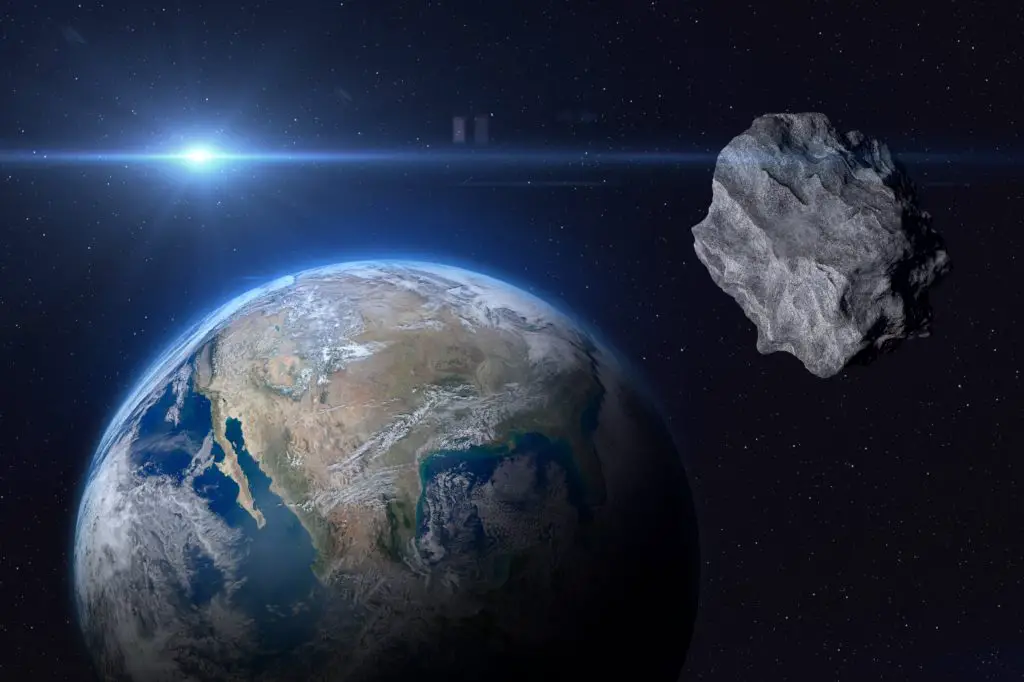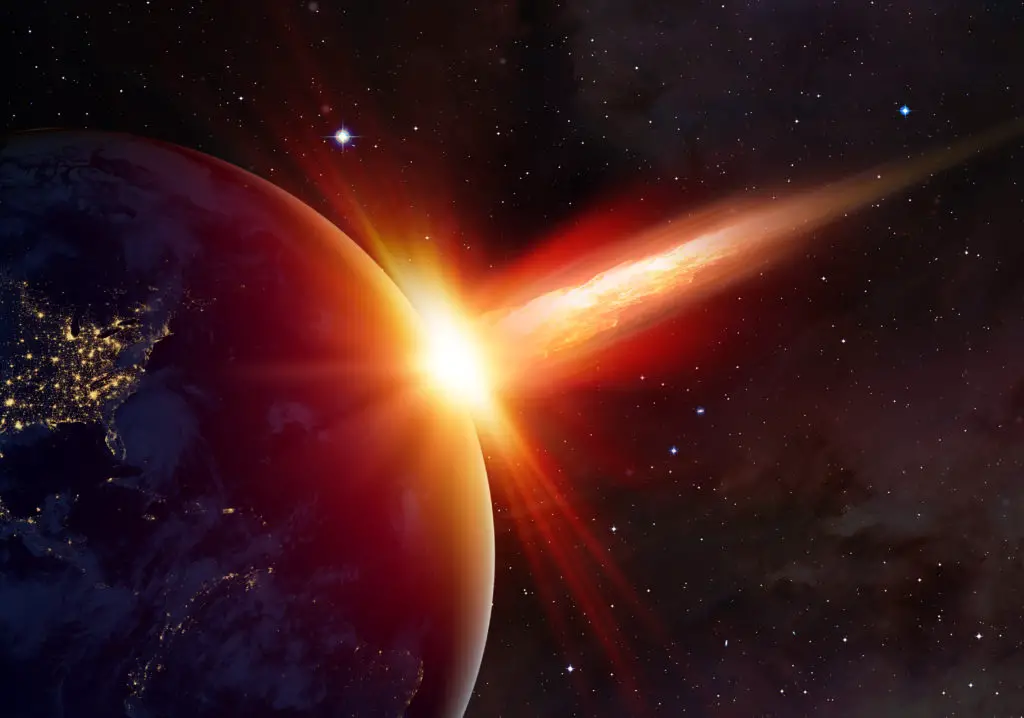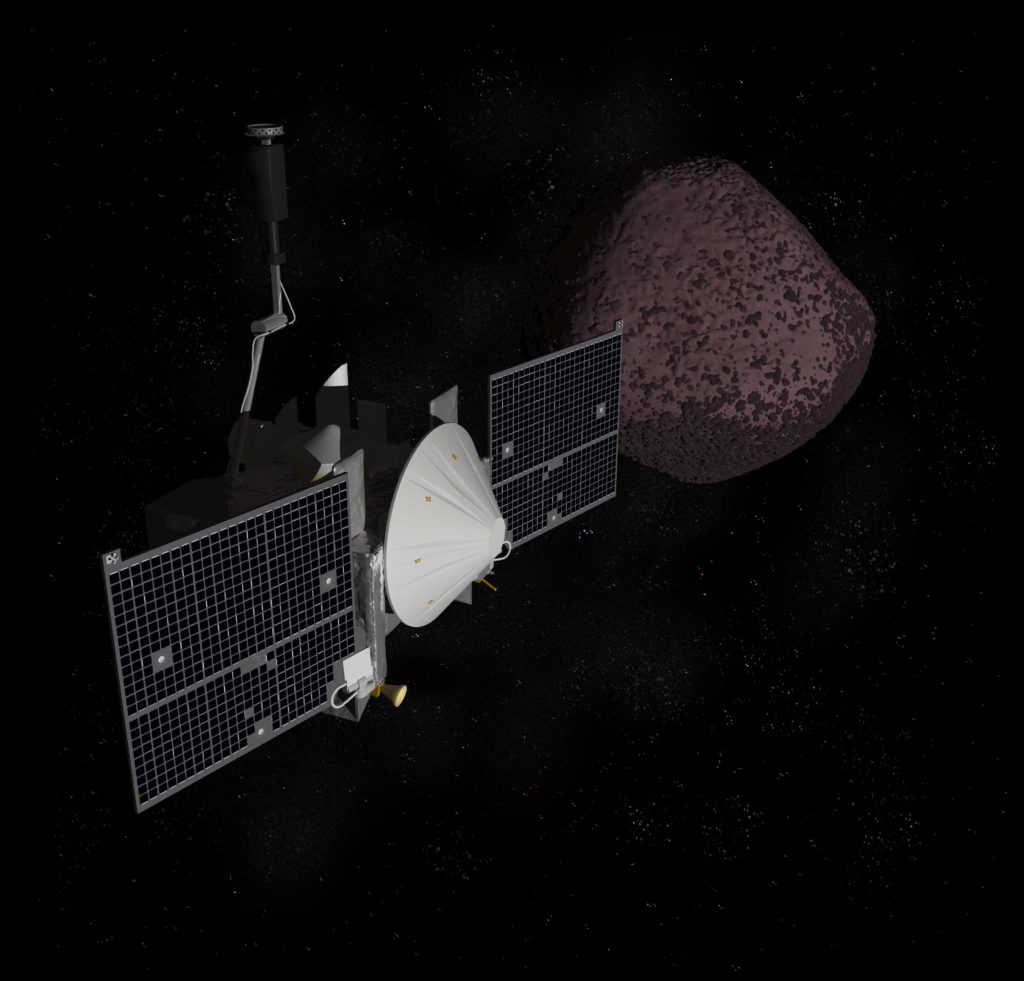NASA’s OSIRIS-REx mission is set to make a historic return to Earth on Sunday, bringing back a sample collected from the asteroid Bennu. This will mark the first time a US mission has successfully retrieved a piece of an asteroid and brought it back home. Bennu, a half-kilometer wide spinning top-shaped space rock, is classified as a “potentially hazardous” asteroid due to its orbit. Despite this, experts assure that there is no need for immediate concern about potential impacts.

Studying asteroids like Bennu can provide valuable insights into the early days of our Solar System. These ancient celestial bodies may have played a crucial role in delivering water and the building blocks of life to Earth. By examining the properties of Bennu, scientists hope to unlock secrets about the formation of planets and the origins of life itself.
Precision in Action: OSIRIS-REx Sample Retrieval and Analysis Process
The OSIRIS-REx mission team has been meticulously preparing for the sample retrieval for months. On September 24, at approximately 8:42 am local time (2:42 pm UTC), the spacecraft’s capsule will re-enter Earth’s atmosphere, deploy a parachute, and land within a designated area at the Utah Test and Training Range, owned by the US Air Force. Following the landing, the capsule will be transported to a specially equipped room to avoid contamination. In this dedicated cleanroom, the process of sample analysis will commence, with various components of the spacecraft, such as the heat shield and back shell, being removed. Nitrogen will be used to eliminate oxygen and moisture from the sample canister.
The Johnson Space Center will be the hub of scientific research once the sample arrives. The precious material will be opened and examined in a specialized cleanroom, ensuring the utmost care is taken to prevent contamination. Portions of the sample will then be distributed to research institutes for further analysis. NASA estimates that the collected sample exceeds the required threshold of 60 grams, with estimations ranging from 400 to 1,000 grams (14-35 ounces). Consequently, there will be ample material available for scientists to study.
Uncovering Bennu’s Secrets: Insights from Vatican Observatory’s Curator, Brother Bob Macke
Brother Bob Macke, the curator of meteorites at the Vatican Observatory, eagerly anticipates the arrival of the specimens. He has developed a pycnometer, a device that measures the volume, density, and porosity of cosmic material. Analyzing these characteristics will provide essential insights into the formation of Bennu. Initially, scientists expected the asteroid’s surface to be covered in sandy soil. However, to their surprise, the OSIRIS-REx mission revealed that there is a significant presence of boulders on Bennu’s surface. The smaller, more easily scoopable material was found in the craters and depressions. However, reaching these areas was a risky maneuver due to the loose structure of the asteroid, which is held together primarily by gravity.
Dante Lauretta, the principal investigator of the OSIRIS-REx mission, stressed the importance of examining the craters and the stereoscopic images that led to the spacecraft’s successful retrieval of the sample. These 3D images were created by astrophysicist Sir Brian May, most famously known as the guitarist of the rock band Queen, along with his collaborator Claudia Manzoni. The pair leveraged May’s expertise in stereoscopy to capture the detailed features of Bennu in their publication. Their work captured the asteroid’s unusual structure and aided in identifying a safe location to land and collect the sample.

Bennu carries unique significance as it provides a time capsule of the early Solar System. A primitive object, Bennu can give us valuable insights into the conditions that prevailed during the birth of our corner of the universe. Additionally, the sample from Bennu will help scientists better understand meteorites and their origins. While some meteorites come from celestial bodies such as the Moon and Mars, numerous others originate from asteroids. However, little is known about the specific asteroids from which these meteorites originate or their locations within the Solar System. The sample from Bennu will enable researchers to contextualize and clarify these unknowns, furthering our knowledge of the Solar System’s formation.
Unlocking the Secrets of Meteorite Research: Insights from Professor Sara Russell

Professor Sara Russell, a member of the OSIRIS-REx Sample Analysis Team from the Natural History Museum in London, elaborates on the importance of this context. She states that in order to make significant advancements in meteorite research, scientists need to understand the geological and astronomical context surrounding the samples. By doing so, they can gain deeper insights into the formation of the Solar System and the composition of these intriguing rocks.
Once the sample has been safely delivered and analyzed, the OSIRIS-REx mission will continue its journey, shifting its focus to another near-Earth object—asteroid Apophis. This asteroid will be reached by the mission in 2029, and the team is eager to uncover more mysteries and expand our understanding of the cosmos through this next endeavor.

The return of the OSIRIS-REx mission and the subsequent analysis of the asteroid sample will undoubtedly contribute vital information to our understanding of the early Solar System, the origins of life, and the composition of celestial bodies. It represents a significant achievement in space exploration and highlights the continued dedication of scientific teams to push boundaries and unravel the mysteries of our universe.
What Can We Learn from the OSIRIS-REx Mission and the Bennu Sample?
NASA’s OSIRIS-REx mission and the retrieval of the Bennu sample are groundbreaking achievements in space exploration. The return of this precious material opens up a world of possibilities for scientific research and discovery. Here are some key takeaways from this historic mission:
1. Insights into the Early Solar System: By studying asteroids like Bennu, scientists can gain invaluable insights into the early days of our Solar System. These celestial bodies are like time capsules, preserving the conditions and building blocks that led to the formation of planets and the origins of life on Earth. The Bennu sample will unlock secrets about our cosmic past and help us understand the processes that shaped our corner of the universe.
2. Understanding the Origins of Life: Ancient asteroids like Bennu may have played a crucial role in delivering water and organic materials to our planet. By analyzing the composition of the Bennu sample, scientists can investigate the presence of amino acids, sugars, and other building blocks of life. This research could provide clues about the potential for life elsewhere in the universe.
3. Context for Meteorite Research: Meteorites that have fallen to Earth often come from asteroids. However, little is known about the specific asteroids they originate from or their locations within the Solar System. The Bennu sample will provide researchers with a unique opportunity to contextualize and clarify these unknowns. This understanding will enhance our knowledge of meteorites and their origins, deepening our understanding of the Solar System’s formation.
4. New Asteroid Exploration: With the success of the OSIRIS-REx mission, the team is now setting their sights on another near-Earth asteroid called Apophis, which they will reach in 2029. The mission’s continuation will allow scientists to explore different celestial bodies and expand our knowledge of the cosmos.

NASA’s OSIRIS-REx mission stands as a testament to human curiosity and determination. It represents a pioneering leap into the realms of space exploration, offering us not only a glimpse into the distant past of our Solar System but also a bridge to a future of deeper cosmic understanding.
The Bennu sample, a tiny fragment from the vastness of space, holds within it the potential to unravel mysteries that have puzzled scientists for generations. Its examination will undoubtedly shed light on the earliest days of our Solar System, the genesis of life’s essential building blocks, and the enigmatic origins of meteorites.
As we eagerly anticipate the discoveries that await us in the pristine laboratory of this celestial gift, we are reminded of the infinite wonder that surrounds us in the cosmos. The OSIRIS-REx mission has ignited a beacon of hope for future exploration, and as the spacecraft prepares to embark on its next journey towards asteroid Apophis, we find ourselves on the brink of yet another exciting chapter in our quest to decipher the universe’s secrets.

This Site Was Inspired By An Interest in Protecting the Environment:
We had the privilege and joy of learning from Dr. Charlie Stine who instilled a love for the natural world through incredible field trips with the Johns Hopkins Odyssey Certificate program in Environmental Studies. At the time, the program was endorsed by the Maryland Department of Natural Resources. Sadly, after Dr. Stine retired, the program was phased out. We hope that we honor his legacy by shining a bright light on environmental issues and sharing good news about the success of various conservation programs when possible.
